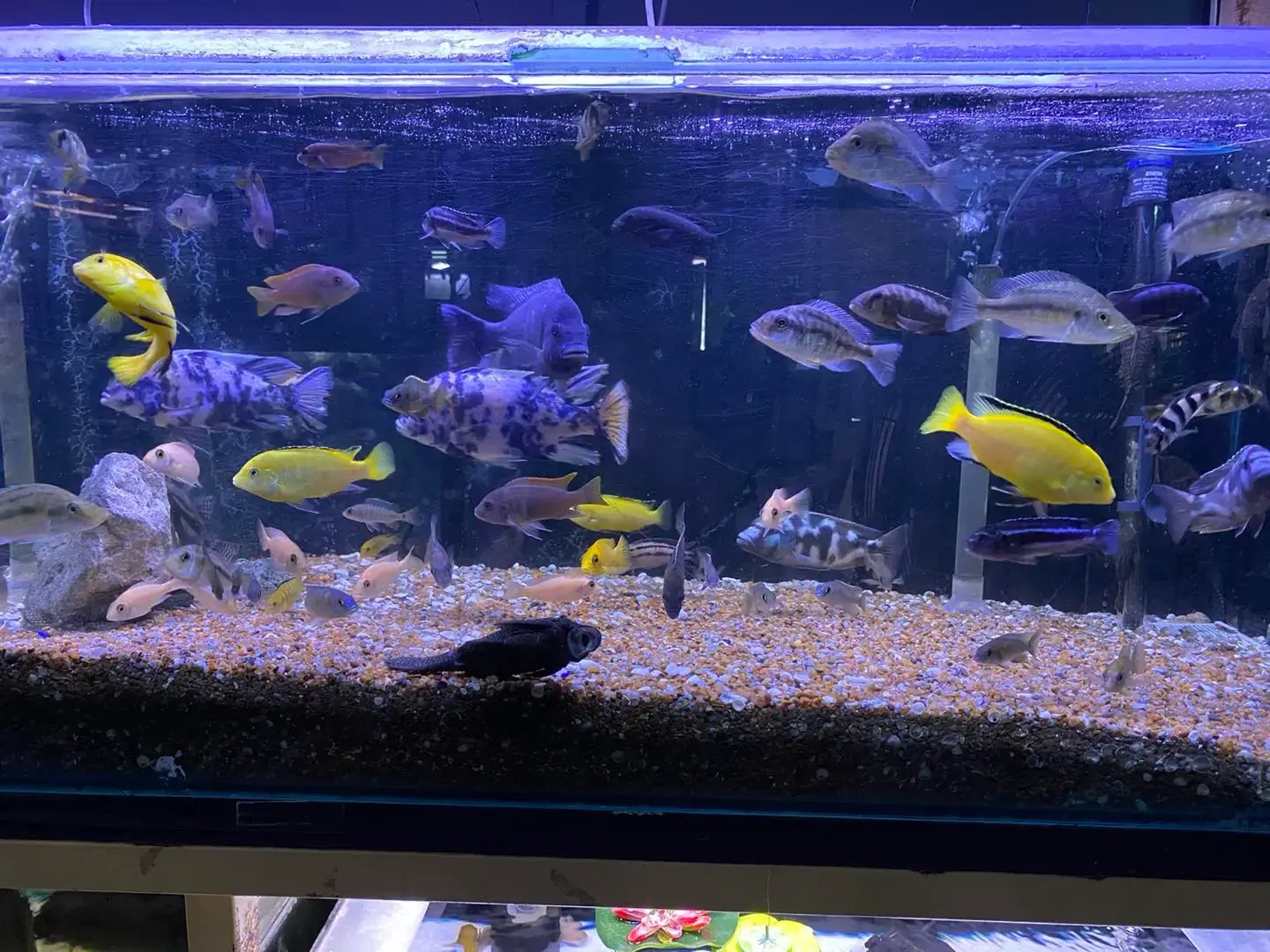
Setting up your first fish tank is exciting, but it’s easy to make rookie mistakes, especially when it comes to choosing the right fish and stocking your tank properly. Without some planning, you could end up with stressed, sick, or even dead fish. Nobody wants that.
In this guide, we'll break down everything you need to know about fish compatibility and stocking so you can build a peaceful, thriving aquarium from day one.
What Is Fish Compatibility?
Fish compatibility simply means how well different fish species get along in the same tank. Some fish are peaceful and love company, while others are aggressive, territorial, or even predatory.
A few key factors that affect compatibility:
- Temperament: Is the fish aggressive, semi-aggressive, or peaceful?
- Size: Big fish might see smaller fish as snacks.
- Water Parameters: Fish need similar temperatures, pH, and hardness levels to thrive together.
- Swimming Zones: Fish that occupy different parts of the tank (top, middle, bottom) tend to avoid clashing.
- Social Needs: Some fish need to live in groups (schooling fish), while others are happier solo.
How to Choose Compatible Fish
When picking fish for your tank, think about their personalities, needs, and natural behavior.
1. Research Temperaments
Group fish into three basic categories:
- Peaceful (like Neon Tetras, Corydoras, Guppies)
- Semi-aggressive (like Gouramis, Angelfish, some Barbs)
- Aggressive (like Cichlids, Betta males with other Betta males)
As a beginner, it’s safest to stick with peaceful species. If you mix semi-aggressive or aggressive fish without experience, you could end up with fights and injuries.
2. Match Water Requirements
Make sure your chosen fish need similar temperatures and pH levels. For example:
- Neon Tetras prefer 72–78°F and slightly acidic water.
- Goldfish prefer 65–72°F and neutral to slightly alkaline water. Mixing these two would cause one of them to suffer, if not both.
3. Avoid Size Mismatches
Even peaceful big fish might eat tiny tankmates simply because they can. Always check the adult size of any fish before buying.
Example: An adult Angelfish might eat baby Guppies or small Tetras.
4. Think About Tank Levels
Fish like to occupy different levels:
- Top dwellers (like Hatchetfish)
- Mid-level swimmers (like Tetras and Barbs)
- Bottom dwellers (like Corydoras and Loaches)
Choosing fish that prefer different zones makes the tank more active and reduces territorial behavior.
Understanding Stocking: How Many Fish Can You Keep?
The classic rule you’ll hear is "1 inch of fish per gallon of water," but that’s very rough and doesn’t always work.
Better guidelines for stocking:
Account for adult size, not the size at purchase.
Consider tank shape — longer tanks are better than tall, narrow ones for fish that like to swim.
Factor in behavior — some fish are active and need more space; others are sedentary.
Overfiltration helps, but you still can’t cram too many fish in.
Example:
A 20-gallon tank could comfortably house:
- 6–8 small Tetras
- 4–6 Corydoras catfish
- 1 peaceful centerpiece fish (like a Honey Gourami)
And that's with good filtration and maintenance.
Popular Beginner-Friendly Stocking Ideas
Here are a few easy, beginner-safe stocking ideas based on a 20-gallon tank:
Community Tank
6–8 Neon Tetras
4–5 Corydoras Catfish
1 Honey Gourami
3–4 Nerite Snails (clean-up crew)
Livebearer Tank
6 Guppies (mix of males and females if you want babies — or all males to avoid it)
4 Platies
4 Otocinclus catfish (algae eaters)
Betta-Friendly Tank
1 Betta (male)
6 Ember Tetras
5 Pygmy Corydoras
A couple of mystery snails
Note: Not all Bettas tolerate tankmates, so always monitor closely.
Common Mistakes Beginners Make (and How to Avoid Them)
Mixing incompatible species (e.g., aggressive fish with peaceful ones)
Overstocking (too many fish, too fast)
Skipping quarantine (new fish can bring diseases)
Buying impulse fish without researching first
Ignoring adult size (that cute little Oscar will outgrow a 20-gallon tank fast!)
Quick Tips for Success
Research before you buy. Don’t trust store labels alone.
Start slow. Add a few fish at a time to let your filter adjust.
Provide hiding spots. Plants, caves, and decorations make fish feel secure.
Monitor behavior. Early signs of bullying or stress? Act fast.
Keep up with maintenance. Regular water changes = healthy fish.
Final Thoughts
Creating a harmonious aquarium isn’t just about picking your favorite fish — it’s about building a community where every fish can thrive. Take your time, plan your stocking carefully, and always put your fish’s needs first.
When you do it right, you'll end up with a tank that’s not only beautiful but full of healthy, happy fish — and that’s what fishkeeping is all about.
